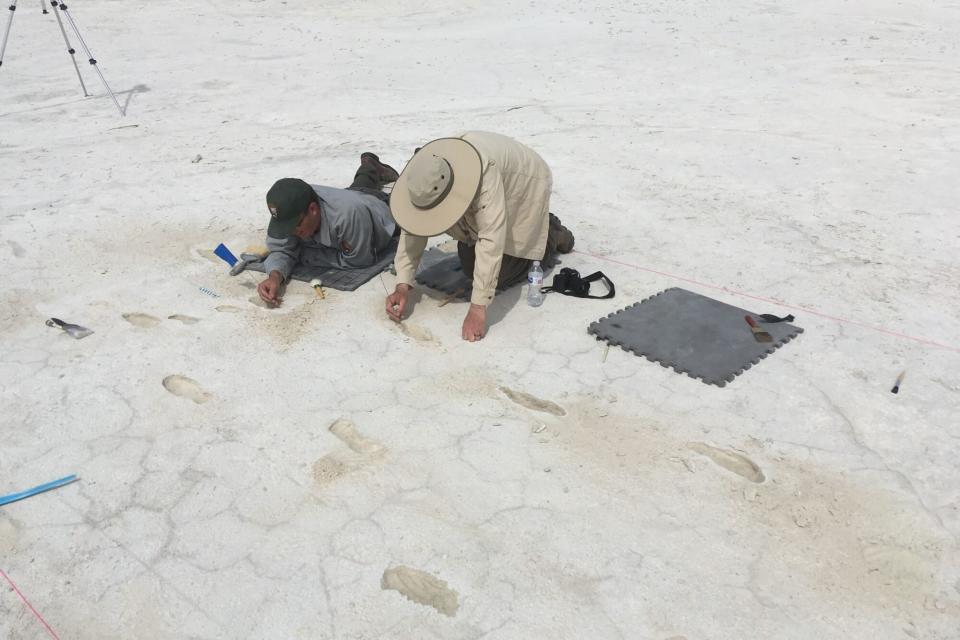Recently Discovered Fossilized Footprints Show That Humans Were in North America 23,000 Years Ago
The first traces of humans in North America has always been a complicated topic to pinpoint among archaeologists. According to CNN, researchers historically thought humans made their way to the continent from Asia through Beringia (the land bridge that once connected the continents) between 13,000 to 16,000 years ago. New findings published in the journal Science now prove otherwise: Fossilized human footprints discovered in New Mexico date back at least 23,000 years.
"The peopling of the Americas is one of those things that has been for many years very contentious and a lot of archeologists hold views with almost religious zeal," said Matthew Bennett, a professor and specialist in ancient footprints at Bournemouth University and author of the study. "One of the problems is that there are very few data points." Researchers found the 61 footprints by radiocarbon that dated layers of aquatic plant seeds. The team uncovered these prints in the Tularosa Basin in White Sands National Park, and they all appeared to be created between 21,000 to 23,000 year ago. The prints were from teenagers and children in New Mexico during the peak of the final Ice Age.
Related: Researchers Discovered a Rare 500-Million-Year-Old Fossil of a "Worm-Like" Animal

Courtesy of Bournemouth University / NPS
Since the Last Glacial Maximum, an icy time period between 19,000 and 26,000 years ago, covered areas like New York, Cincinnati, and midwestern regions, like Des Moines, Iowa, the climate made traveling between Asia and Alaska an impossible feat. So, the humans who ended up making the footprints had to have made their way to North America long before that event. "It's the first unequivocal site and a good data point that places people in the American southwest around the last glacial maximum," Bennett said. "That's the important point because it allows you to look at the older sites, the more controversial sites, with a different light."
Take the Chiquihuite Cave in Zacatecas, for example. This site in central Mexico once revealed flaked stone tools made by humans 30,000 years ago. David Rachal, a geoarchaeology consultant, noted that the New Mexico footprint findings are "extremely solid" and the "dates come from seed layers located above and below the trackway surface, which brackets the track-forming event. You could not ask for a better setup." More research could help uncover why tools weren't also found in New Mexico. "These tracks suggest that people were in New Mexico way earlier than expected," he added. "This is a theme that is gaining some serious traction in the literature. However, we need to be cautious and more research needs to be done before we start doing a lot of arm waving."
These footprints were linked to humans between the ages of nine and 14, and they were likely made in soft ground, near a wetland. Dust blowing over the ground helped preserve the prints from these humans, who likely did 10,000 steps per day as hunters and gatherers. "One hypothesis for this is that division of labor, in which adults are involved in skilled tasks whereas fetching and carrying are delegated to teenagers," study authors said. "Children accompany the teenagers, and collectively they leave a higher number of footprints that preferentially recorded in the fossil record."

